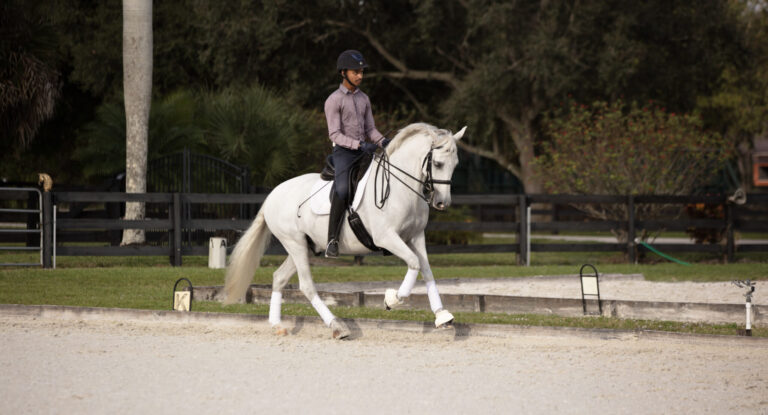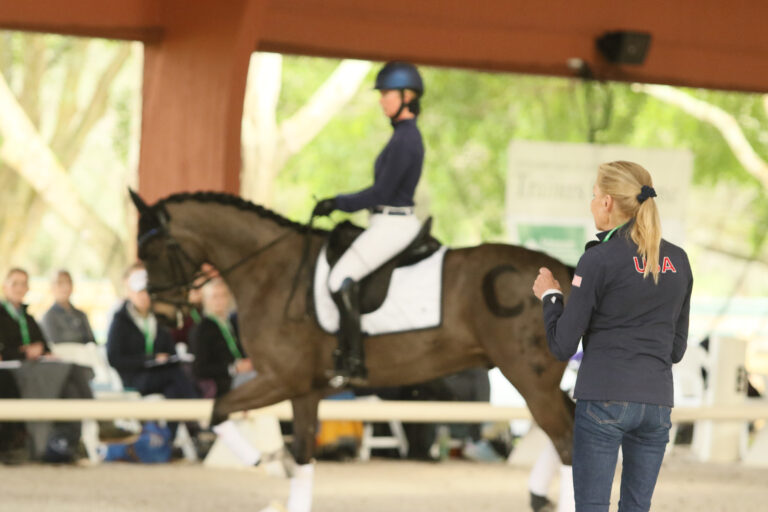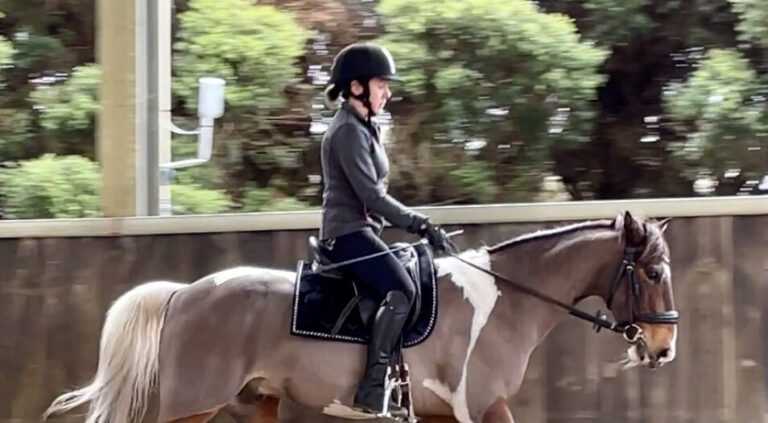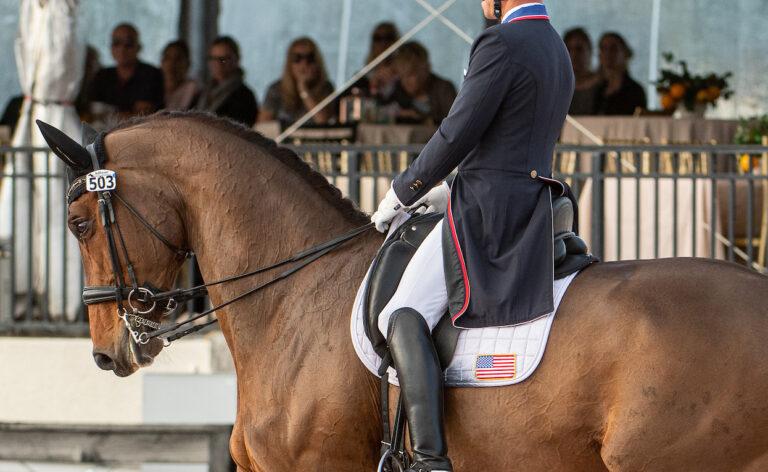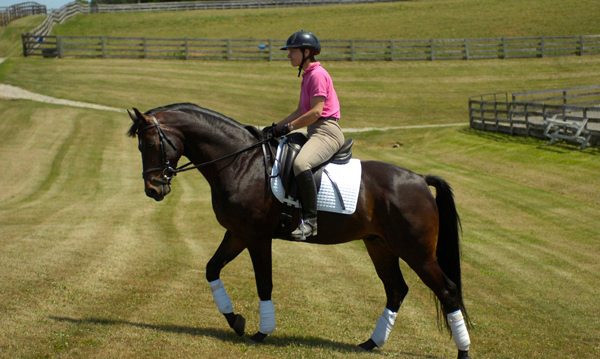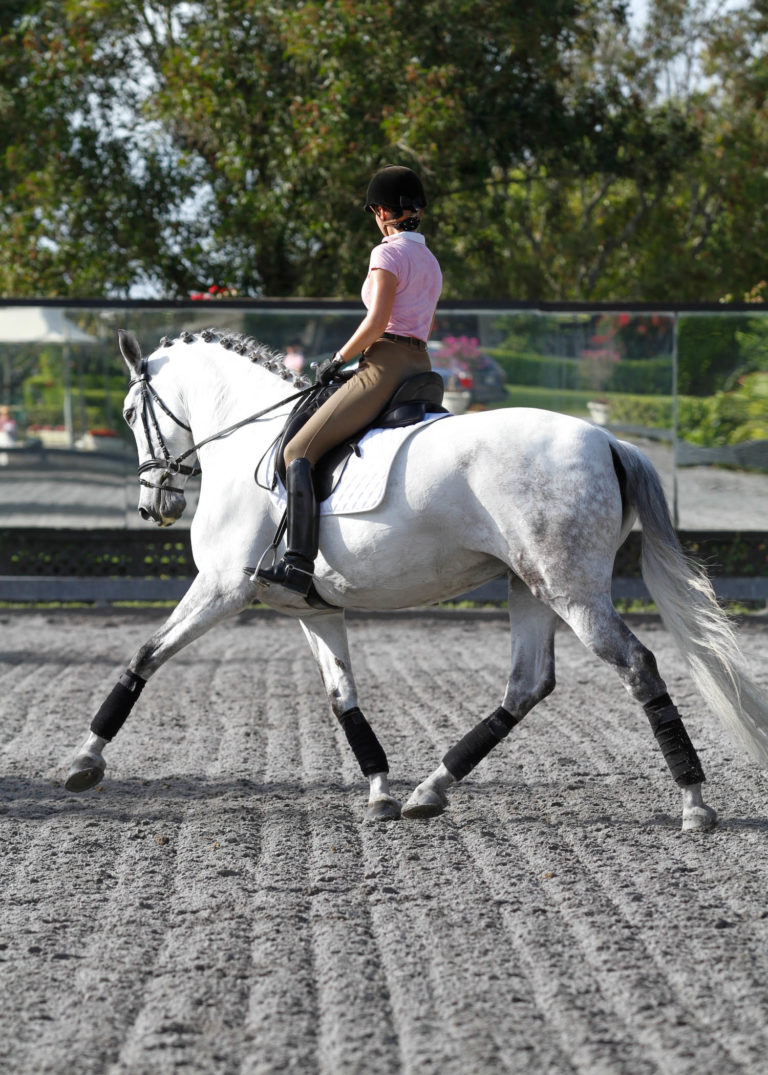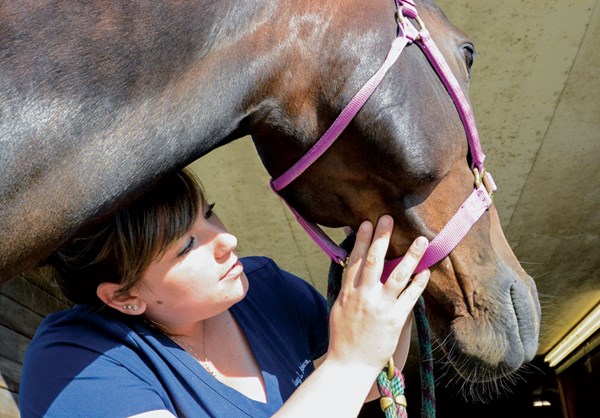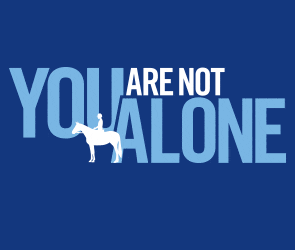This picture shows Lucy Thomas on her pony, Milano, competing at British Dressage Elementary Level, the equivalent of Second Level. Lucy asked for feedback that will help their training.

As I look at this image, I see a lot of energy. Lucy is using her own energy to ride as perfectly and correctly as she can, and her pony is expressing his energy through his desire to move forward while listening to Lucy at the same time.
They are cantering on a circle and I notice that they have some difficulty finding balance through the turn. Generally, when balance is at stake, energy and strength are needed to compensate for it. Tension also arises from a lack of balance.
Part of Milano’s energy appears tense, as he is trying to stay in balance while cantering on the circle. I can see that Milano is leaning a bit into the turn with his body—like a motorbike—and Lucy is attempting to help him by using more of her outside rein.
It is important to understand that when you think about straightening and balancing your horse, you not only consider his balance from his ears to his tail, but also the vertical line of balance that runs from the top of your head through your spine, between your seatbones, through the center of the saddle, the horse’s back, and body and down between his legs to the ground. Often when horses and riders go through a turn, they lean into the direction of the turn, rather than staying upright.
Leaning into turns is not an uncommon problem. To prevent this, I would suggest Lucy and Milano do the following exercises that switch between riding curved and straight lines. These exercises can be ridden in walk, trot and canter and will give you more feel and understanding of your horse’s balance.
Exercise 1: Zig-Straight
You can begin this exercise in walk to feel what it is and how it works, but ideally, you will ride this exercise in trot and canter to have the maximum benefit. (See diagram.)

As you ride around the arena, turn onto the diagonal. At the quarter line, continue straight, parallel to the track. After a few meters, turn again in a shallow diagonal and continue straight. Continue riding this pattern of turning and then going straight for a few more repetitions.
As you do this exercise, feel how the horse’s shoulders turn, but have to straighten up right after. This will help you rebalance the horse more easily between your diagonal aids. You can make this exercise more advanced by changing the direction of your line every three to five strides.
Exercise 2: Ride a Diamond
After you have completed the previous exercise, think about riding a 20-meter circle but instead, ride it like a diamond, with corners on the long sides, at the middle of the short side and crossing the centerline. (See diagram.)
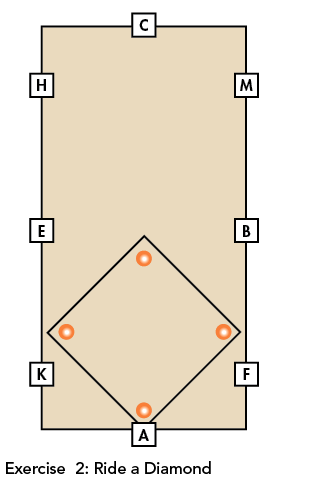
The beauty of this exercise is that it helps give the rider a feel of where and how in the diamond the horse needs help—through the rider’s aids—to find balance. The quick, rhythmical shifts in direction make it more clear how the outside and inside aids complement each other to enhance balance.
Lucy can also advance from a diamond to more gradually shallow corners so that the circle becomes round. Then, she will have a better feel of the interplay of her inside and outside aids to help her horse maintain his balance. Riding a round circle is nothing else but a consistent game between turning and straightening.
When Lucy and Milano can put their energy together within a common balance, Lucy will be more effective and Milano will become more supple at the same time.
I hope that this feedback is beneficial for Lucy and Milano and it helps them discover positive energy in their schooling and performance!
Susanne von Dietze is a leader in equestrian biomechanics. A physiotherapist, licensed Trainer A instructor and judge for dressage and show jumping, she gives lectures and seminars throughout the world, including at the prestigious German Riding Academy in Warendorf. She is a native of Germany and now lives with her husband and three children in Israel, where she competes at the international level. She is the author of two books on the biomechanics of riding: Balance in Movement and Rider and Horse, Back to Back.


